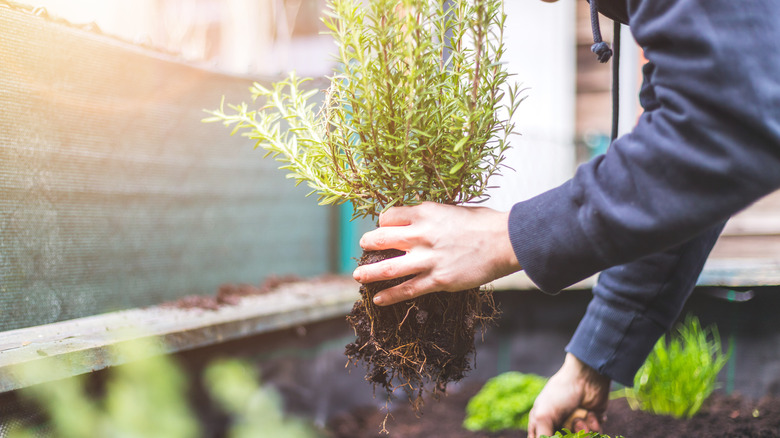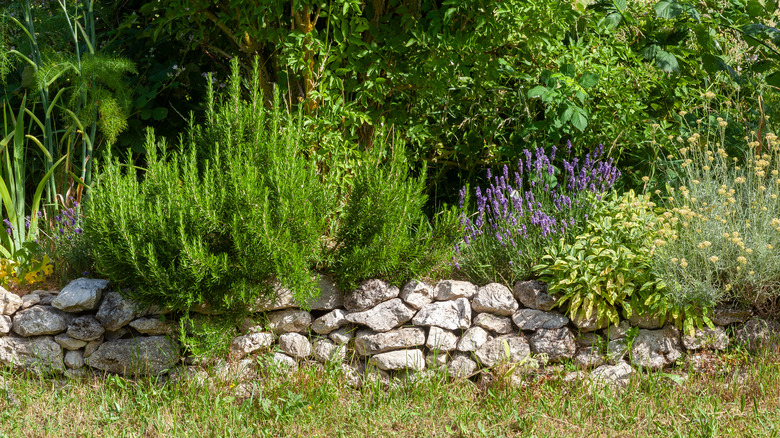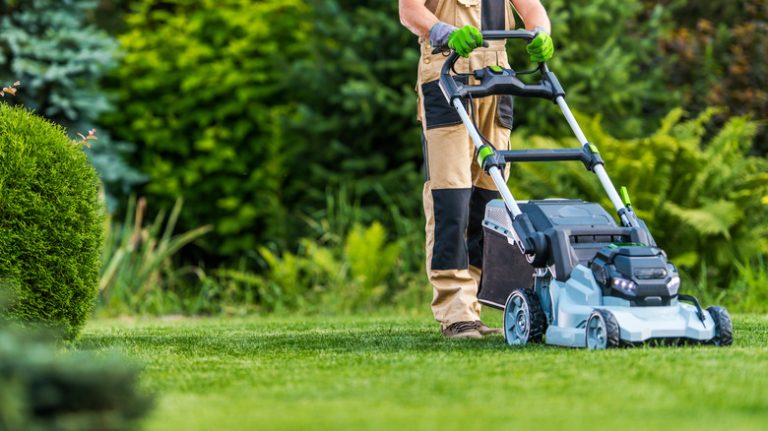Rosemary and lavender are two widely appreciated and aromatic perennial herbs that will never leave your garden once planted that also make excellent companions. Both herbs share a preference for well-drained, slightly alkaline soil and thrive in similar growing conditions. Their compatibility in terms of soil requirements allows for easy integration into a cohesive garden design. This shared preference minimizes the need for specialized care, making it convenient for gardeners to cultivate and maintain these aromatic herbs side by side or in the same raised garden bed, benefiting from their exceptionally fragrant scents.
Secondly, rosemary and lavender complement each other visually, creating an aesthetically pleasing and harmonious garden landscape. The contrasting yet complementary hues of their needle-like leaves and vibrant blossoms add texture and color diversity. The silvery-green foliage of rosemary provides an attractive backdrop to the lavender’s delicate, aromatic blooms. This visual synergy enhances the overall appeal of the garden, creating a sensory-rich environment that engages both sight and smell.
Furthermore, planting rosemary and lavender together can offer practical benefits in pest management. Both herbs are known for their aromatic oils, which possess natural insect-repelling properties. The fragrance emitted by rosemary and lavender can help deter certain pests—particularly mosquitoes—acting as a natural form of pest control. Integrating these herbs strategically in the garden can contribute to a healthier overall ecosystem, reducing the likelihood of pest infestations and promoting the well-being of neighboring plants.
How to plant rosemary and lavender together

Planting rosemary and lavender together in the garden involves careful consideration of their individual needs and preferences. Begin by selecting a well-drained location with full sunlight, as both herbs thrive in these conditions. Ensure that the soil is slightly alkaline and amend it with well-rotted compost to enhance drainage and fertility. When planning the layout, provide sufficient spacing between rosemary and lavender plants to accommodate their mature size and prevent overcrowding. Aim for a spacing of at least 1 to 3 feet between each plant to allow for optimal air circulation, reducing the risk of disease and promoting healthy growth.
Before planting, water the herbs thoroughly and prepare the soil by loosening it with a garden fork. Dig holes slightly larger than the root balls of the rosemary and lavender plants. Gently remove the herbs from their containers and place them in the prepared holes at the same depth as they were in their pots. Backfill the holes with soil, pressing it down gently to eliminate air pockets.
Water the newly planted rosemary and lavender generously to settle the soil around the roots. Apply a layer of organic mulch, such as straw or wood chips, around the base of the plants to help retain moisture, suppress weeds, and regulate soil temperature. Establish a regular watering schedule, allowing the soil to dry out between waterings to prevent overwatering and promote healthy root development. Fertilize sparingly, as these herbs prefer lean soils.
Cautions for planting rosemary and lavender together

When planting rosemary and lavender together in a garden, it’s important to exercise caution due to the differing hardiness levels, with rosemary being less resilient in winter conditions. Rosemary is more sensitive to cold temperatures and is generally considered less hardy compared to lavender, especially in regions with harsh winters. This discrepancy in hardiness can lead to potential winter damage for the rosemary, as it may struggle to withstand freezing temperatures. To address this, consider providing extra protection for the rosemary during colder months, such as applying a layer of mulch around its base.
Another benefit when planting rosemary and lavender together involves their distinct water requirements. While both herbs prefer well-drained soil, rosemary tends to be more drought-tolerant than lavender. Both plants may suffer if the soil remains consistently too moist, as this can lead to root rot. To mitigate this risk, ensure that the planting area has good drainage and avoid overwatering.
Furthermore, it’s important to be mindful of the size each plant can reach. Rosemary and lavender have different growth habits, with rosemary often growing into a larger, more upright shrub, while lavender tends to form a lower, spreading bush. Planting them too closely together may result in overcrowding as they mature, leading to competition for sunlight, nutrients, and space. To prevent this, provide adequate spacing between the rosemary and lavender to allow for their individual growth and ensure optimal health and development for both herbs in the garden.



